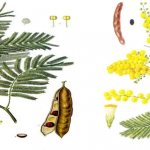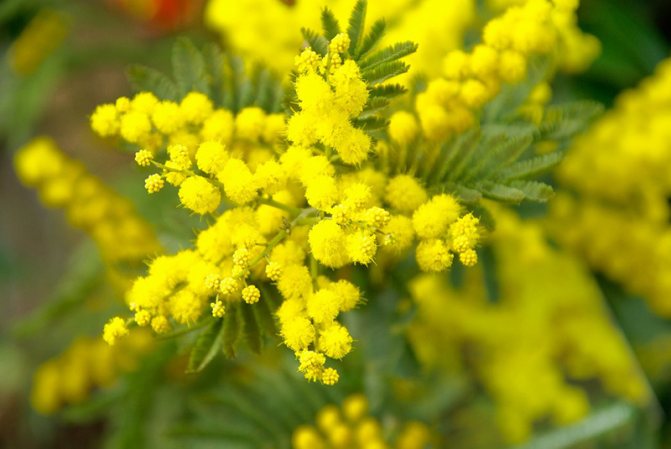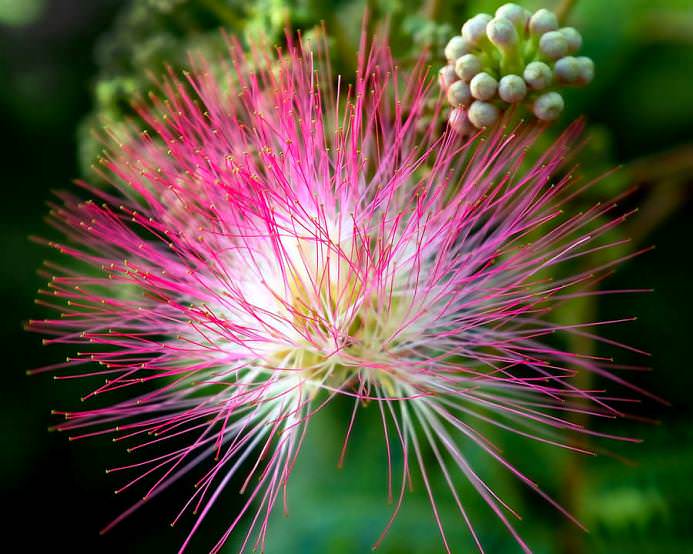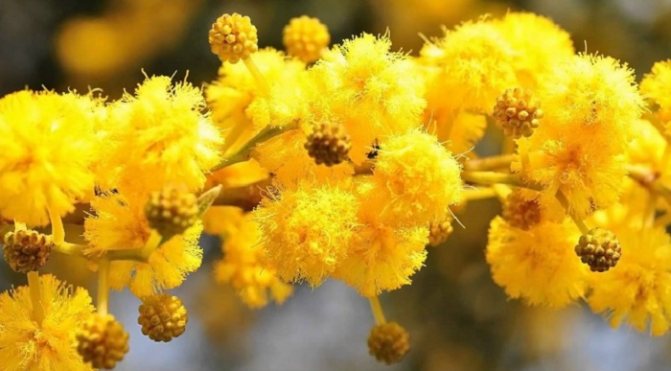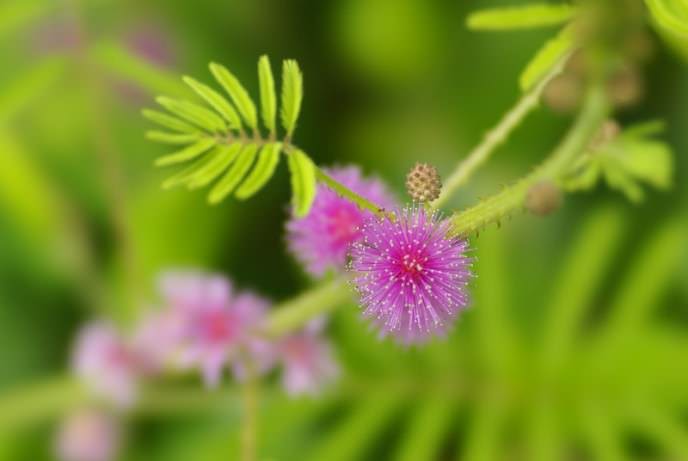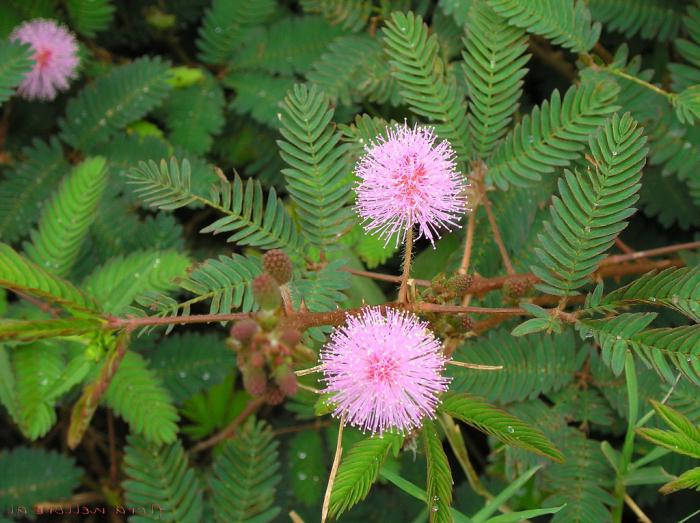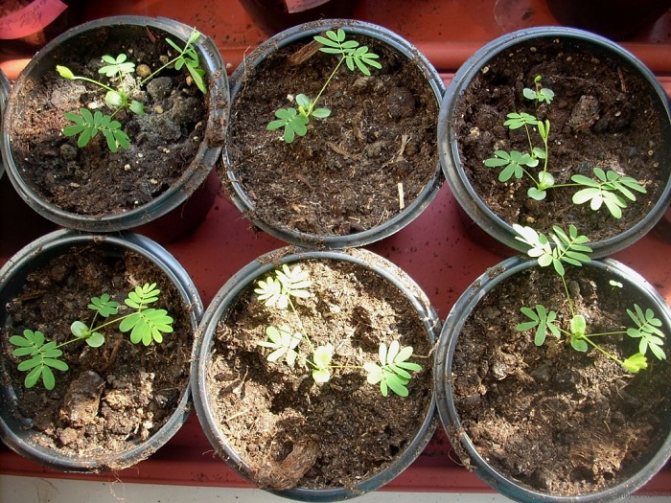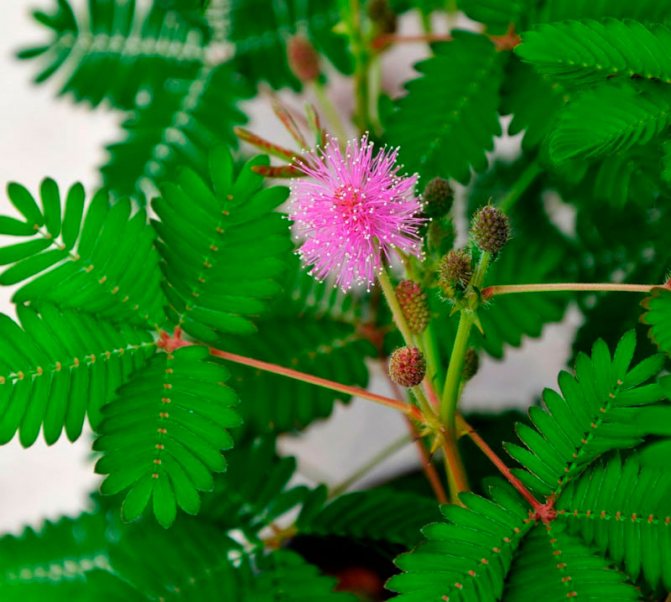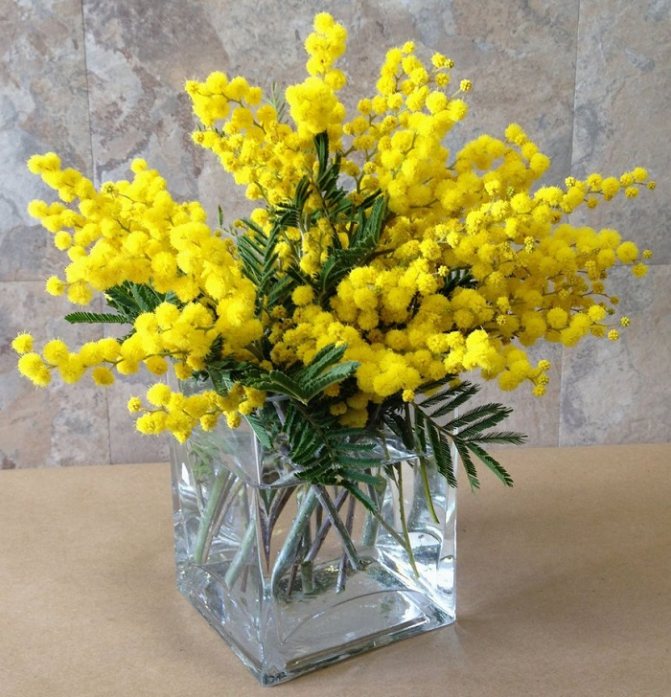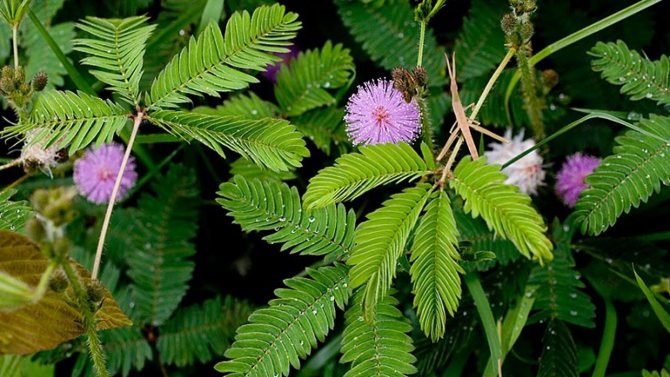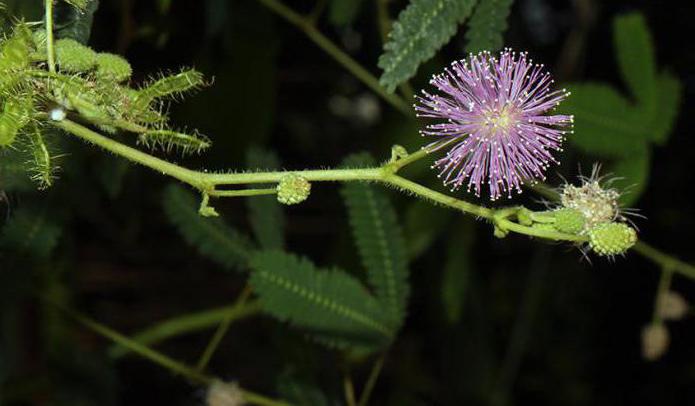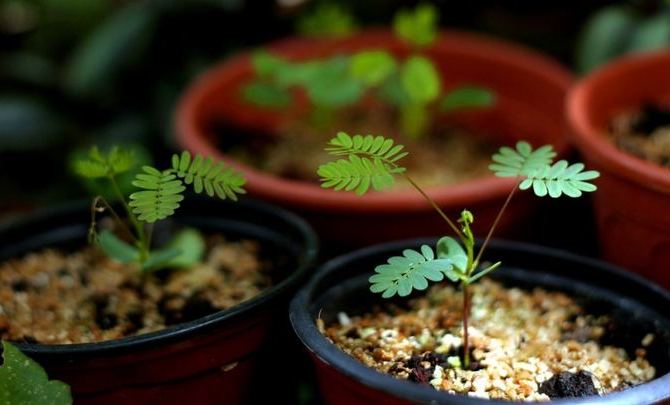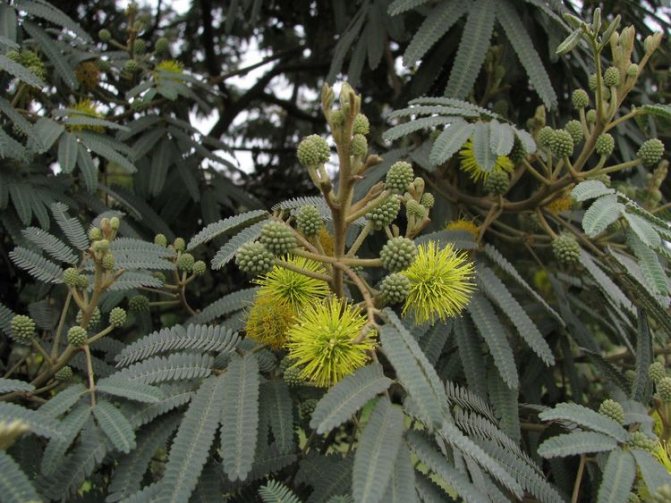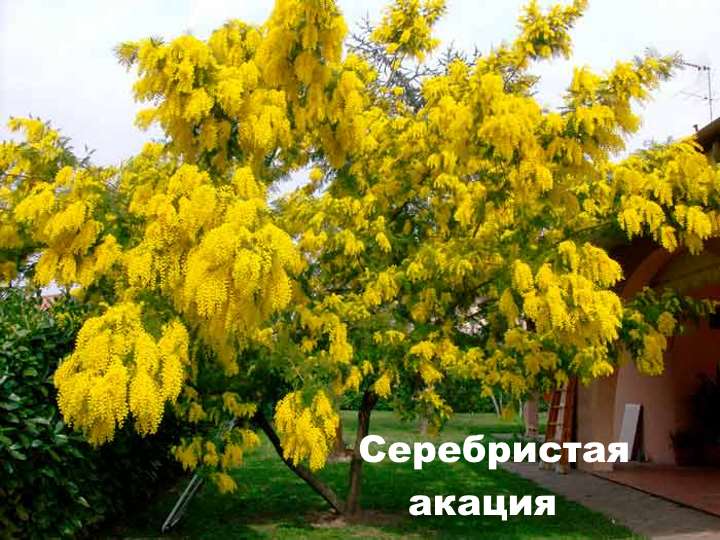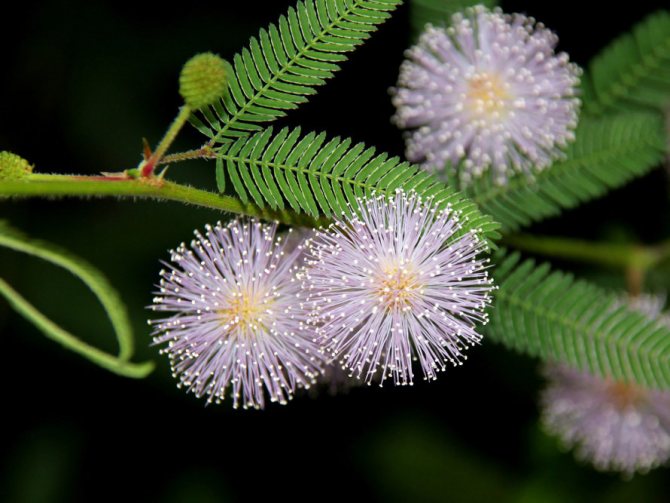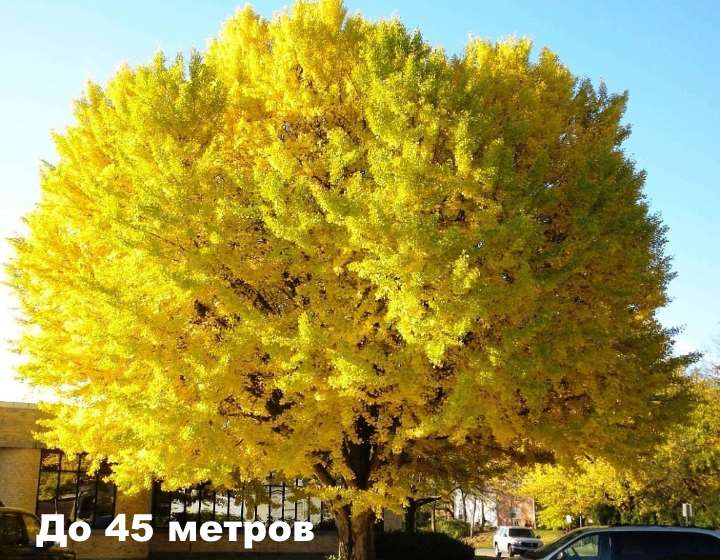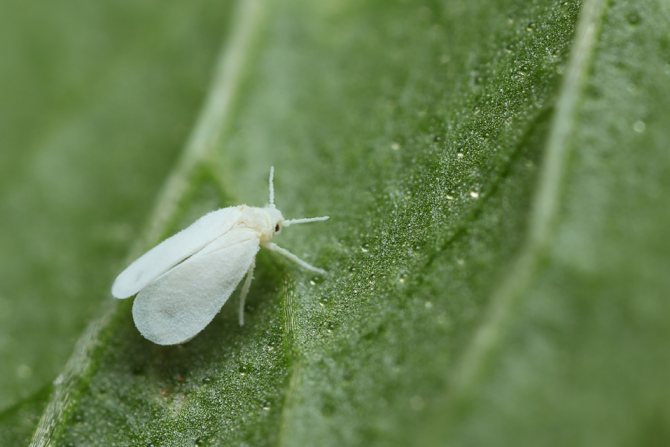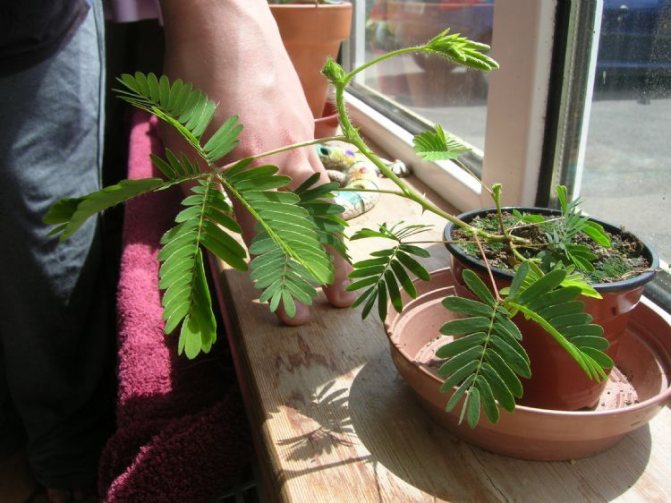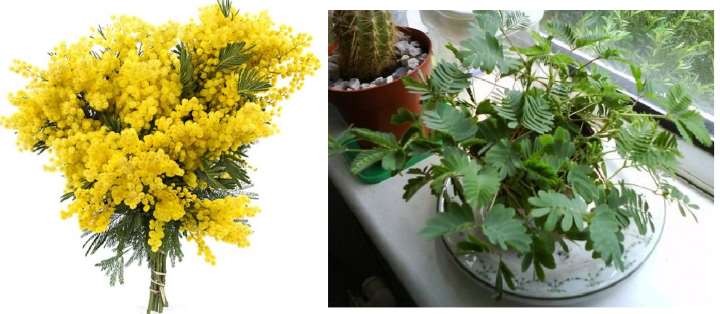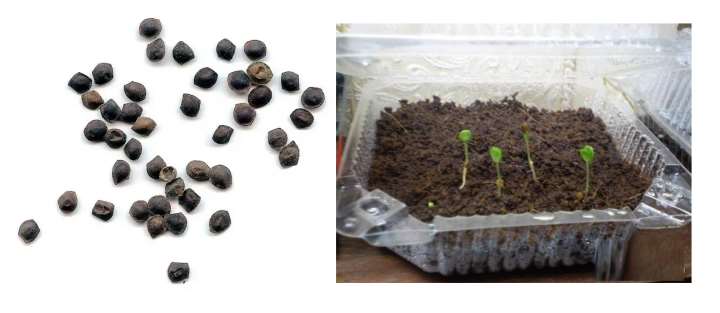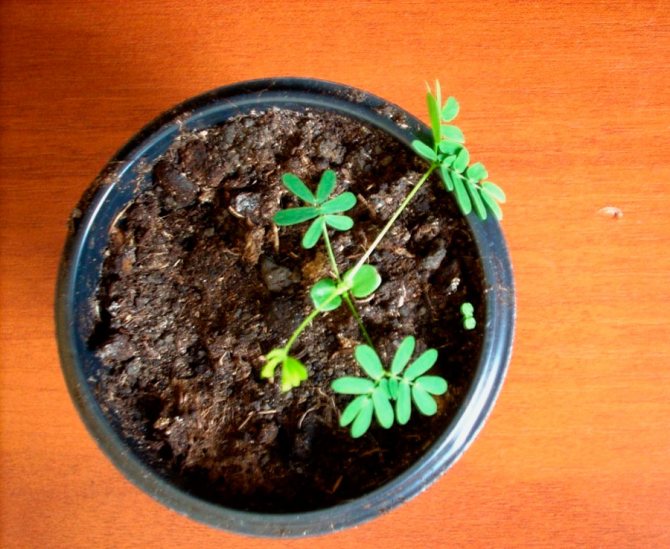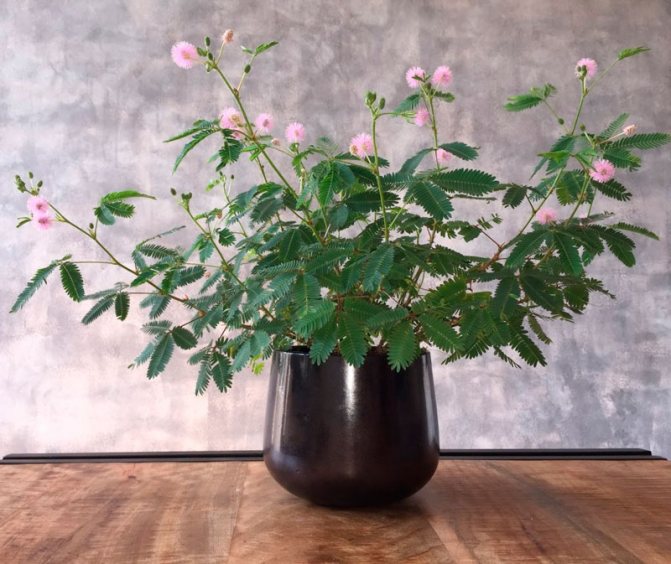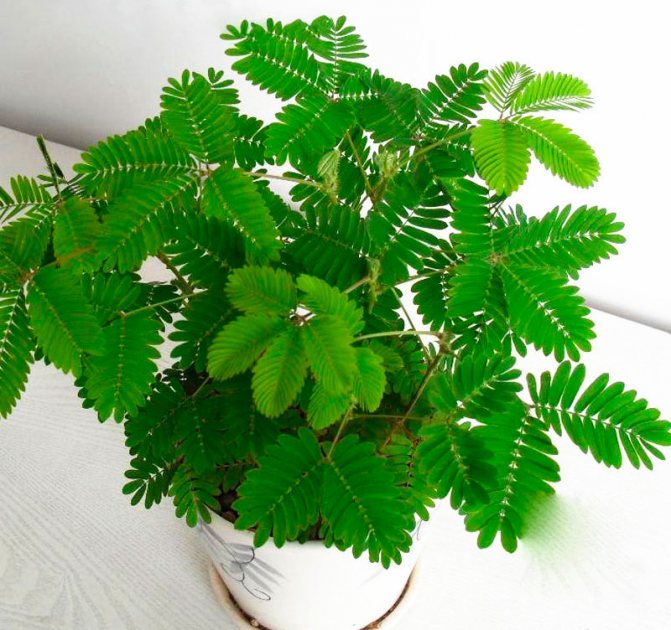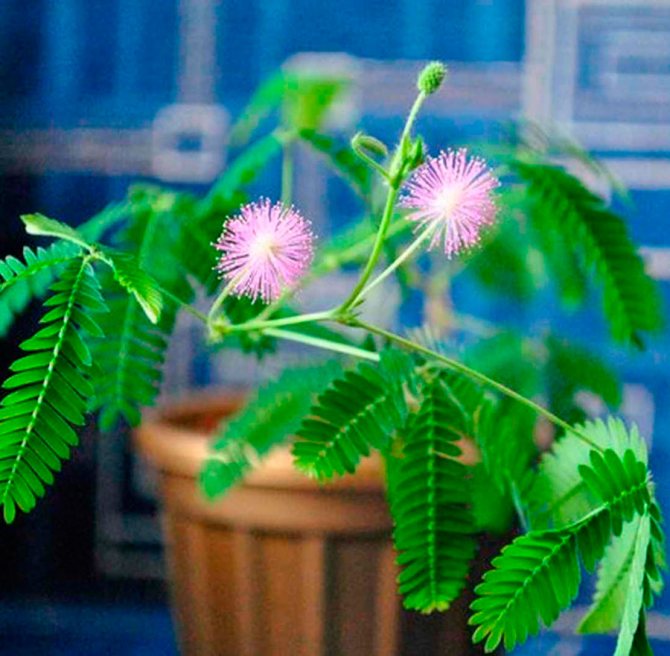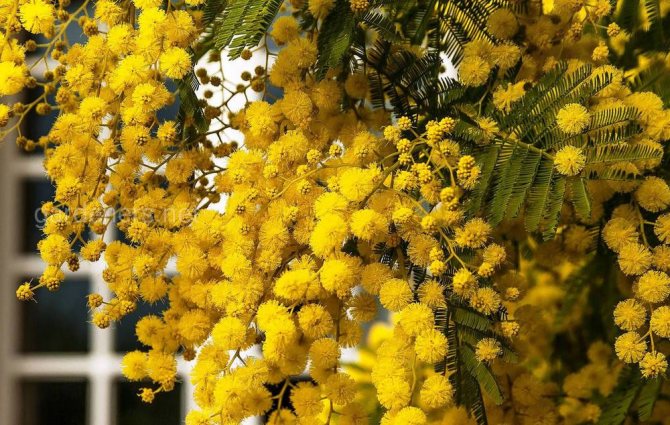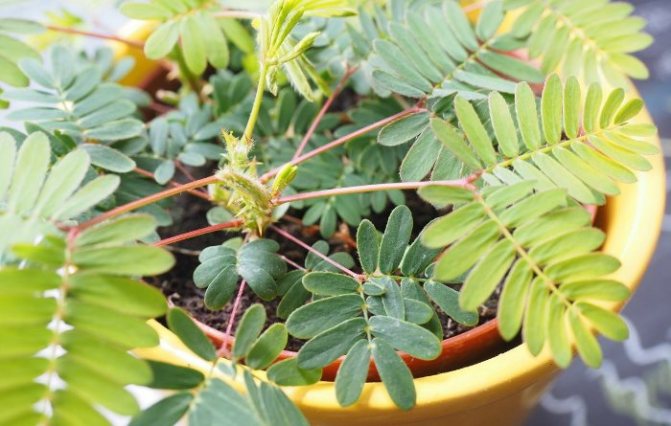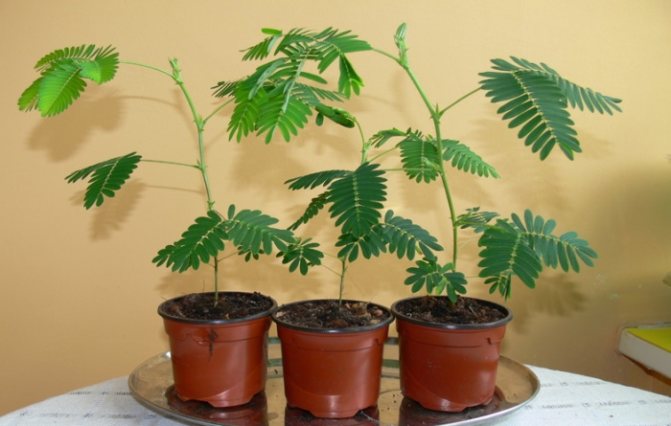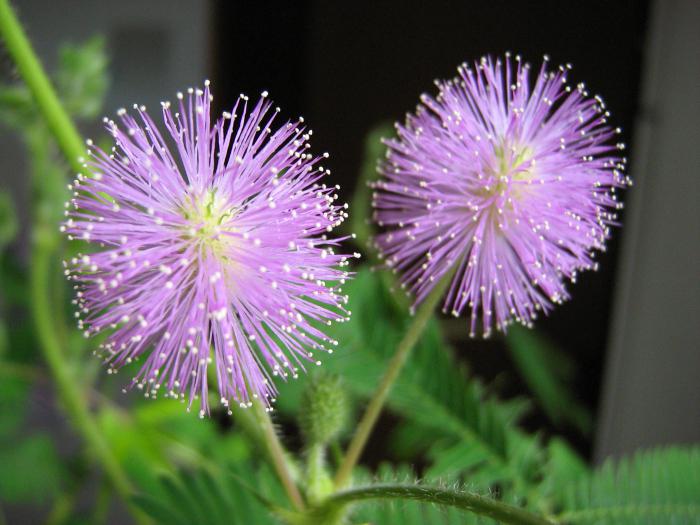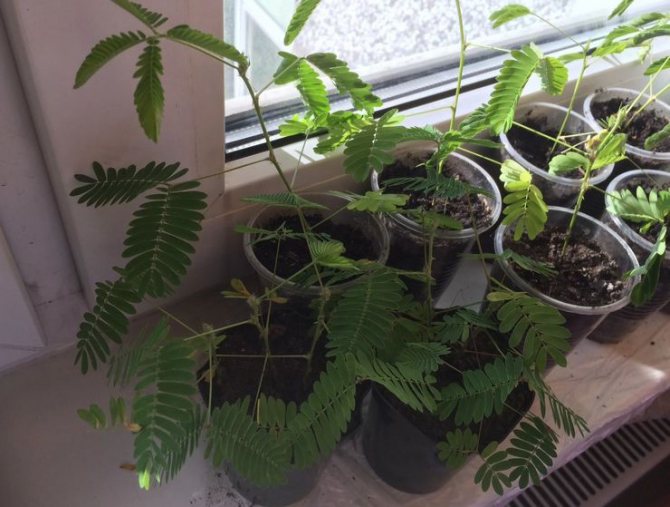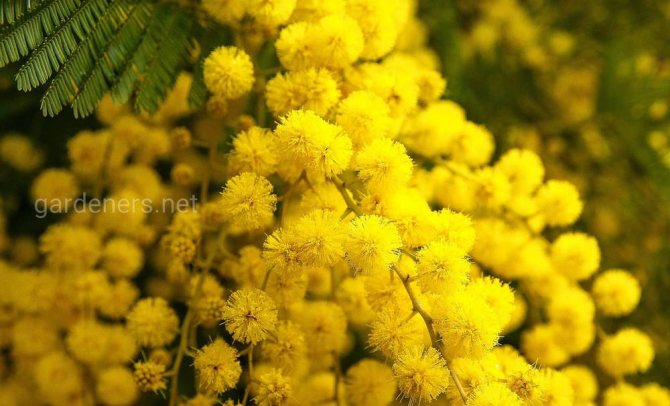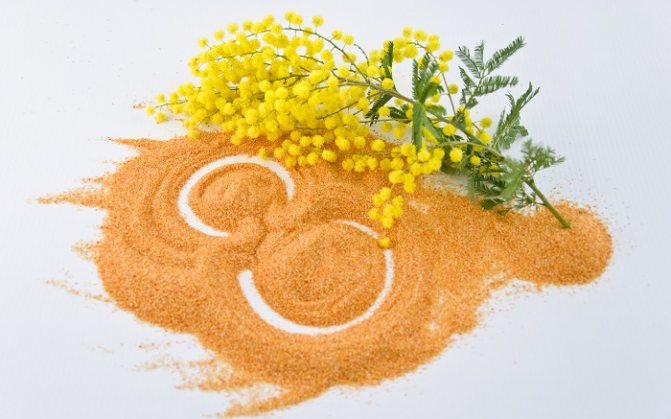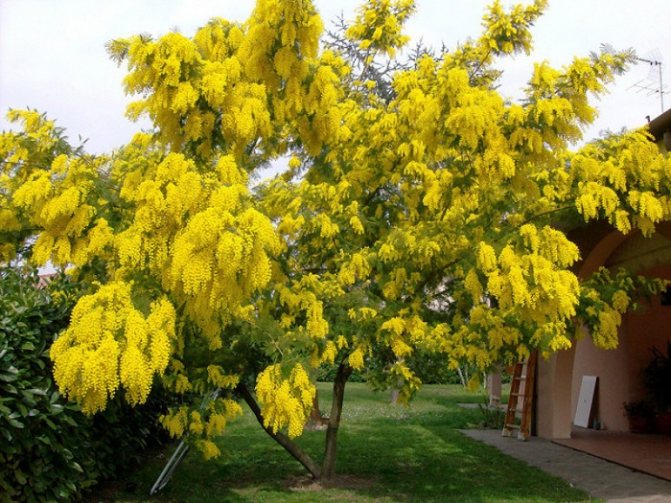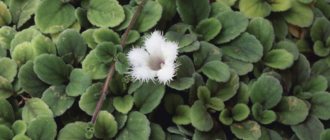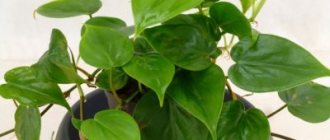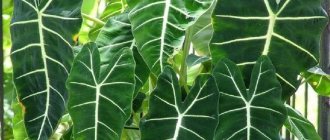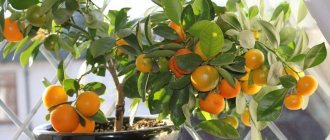Feature of the behavior of mimosa
Mimosa does not tolerate touch; when shaken, it immediately folds the leaves into a tube. This also happens during temperature fluctuations after sunset. After a while, the flower reveals the plates again.
Botanists attribute this to the fact that the plant thus protects itself from tropical showers in the wild. When it rains, it closes the leaves, and when the sun comes out, it opens.
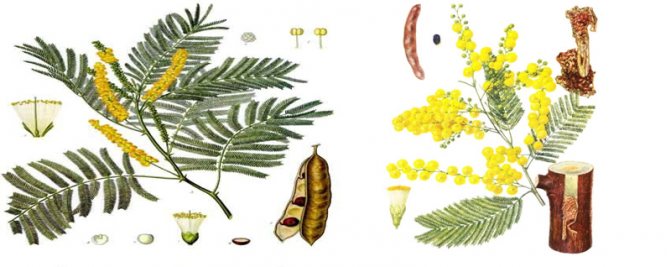
The structure of mimosa
Shy mimosa flower - what is the secret of the plant and how to grow it on your window
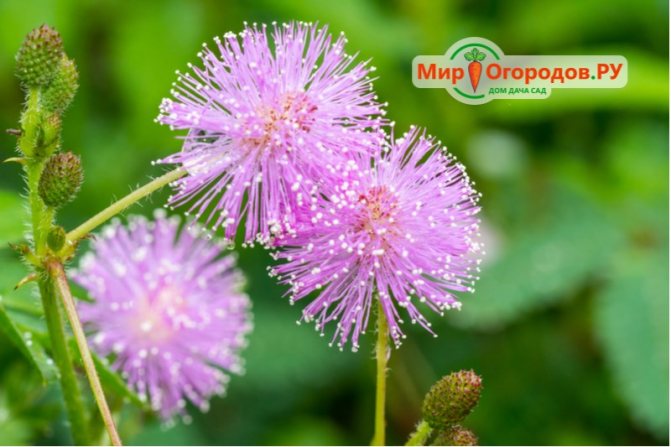

Shy mimosa
Mimosa. The name is familiar to everyone, even men, because in our country it is given on one of the most beautiful holidays. Yellow twigs delight every woman. But, you know, there is a mimosa flower, which is not at all associated with women's day, this is not a shrub with yellow beads that grows somewhere in the south. No, this plant can be freely grown at home. But do not rush to conclusions, the flower has one secret.
Types of mimosa
The following types of mimosa are adapted for growing in indoor and garden conditions:
| Name | Description |
| Shy | Also called silver acacia. The most popular variety. In the wild, it grows in Brazil. In summer, it dissolves purple-pink buds. Cultivated as an annual plant. |
| Rough | Grows in the forests of South America. Snow-white buds, collected in inflorescences. |
| Lazy | The flowers are white, small, and look very decorative. Reaches 50 cm. Stems are erect, branched. Fern-like leaves. |


Description of mimosa or acacia silvery
The Acacia silver plant belongs, like the mother plant, to the legume family, just as beautiful, powerful and evergreen.
In appearance, this is a mighty tree, up to 10 m high with a powerful and spreading crown - such specimens are grown in the Yalta Botanical Garden. Or, Acacia is silvery, like a shrub, two or three-meter plant, which tolerates temperature drops only up to minus 10 degrees and grows in colder regions. Very small, almost miniature bushy plants are also possible, which can be grown as indoor flowers, with a main stem up to 30-40 centimeters high.
The appearance of the leaves of all representatives of the Silver Acacia is the same, only the sizes differ. On long branches there are pinnately dissected leaves, which, before they have time to bloom, become covered with a gray-green bloom, resembling silver in the sun. Thanks to this feature, acacia was called silvery.
Among the silvery leaves, the plant releases flower panicle inflorescences, which over time become covered with fluffy bright yellow balls, exuding a pleasant aroma. On one flowering brush, you can count more than 30 small flowers, the diameter of the largest inflorescence up to 1 cm, but the average is much lower. The balls in appearance resemble small dandelions and are able to hide a branch under them and not at all expressive foliage. Whether it be a tree or a bush - from a distance, Silver Acacia looks very much like a large balloon.
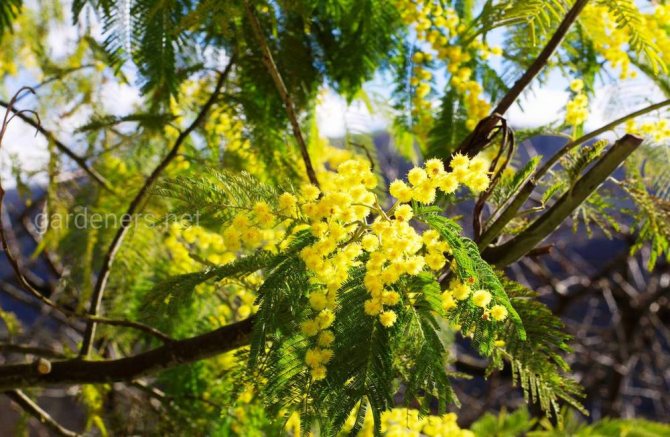

Growing and caring for mimosa at home
Mimosa is unpretentious in content. However, caring for a bush at home requires compliance with certain rules:
| Factor | Spring Summer | Autumn winter |
| Location / lighting | At the western and eastern windows, where direct sunlight does not penetrate. Loves bright light, but you need to get used to it gradually. | Dark, cool room. There is no need for additional lighting. |
| Temperature | + 20 ... + 24 ° С. | + 16 ... + 18 ° С. |
| Humidity | High, 80-85%. Next to the plant, you can put a basin with wet moss, expanded clay. Daily spraying with settled water without bleach is required. It is also advisable to install a humidifier in a room with mimosa. | |
| Watering | Abundant, every 2-3 days. | In the autumn, it is moderate, in winter only if necessary (when the bush dries). |
| Top dressing | Every 2 weeks with mineral fertilizers with an increased concentration of phosphorus and potassium. The dosage indicated on the package must be reduced by 2 times. | Not necessary. |
Watering
From early spring to late autumn, it is necessary to keep the soil moist constantly. That is, watering is required very plentiful. Water is preliminarily taken into a container and left for several days. Hard and cold water is absolutely not suitable. When mimosa blooms, the soil should not be allowed to dry out. Once the top two centimeters are slightly dry, the substrate needs to be moistened. In winter, you can water much less.
In addition, mimosa does not like dry air very much. At the same time, spraying the leaves is not suitable because they are too sensitive. An excellent way out of this situation is to purchase a humidifier. Wet expanded clay or pebbles perfectly save the situation. To do this, take a small tray, lay out the pebbles and place the pot on top. It is enough to add a small amount of water to it, and the plant is provided with an optimal level of moisture.
Outdoor care for mimosa
In its natural environment, mimosa lives in the tropics, so it is difficult to grow it in the climate of our country. Usually the plant is kept in greenhouses, houses, winter gardens, greenhouses. In regions with warm winters, the bush can also be planted in open ground, while it is necessary to ensure proper care for it:
| Parameter | Conditions |
| Location / lighting | South, south-east, south-west, east, western part of the site. The plant must be protected from drafts. Young specimens need shading. When the bush gets used to the ultraviolet rays, it is transplanted to the south side. Bright sunlight, when in the shade, mimosa will lose its decorative effect, it will stop blooming. |
| Temperature | Not lower than +10 ° С. |
| Humidity / watering | The first time after planting, watering is done regularly for better rooting. After a few months, they are stopped. Mimosa is drought tolerant but needs to be watered when the weather is very hot. The soil is moistened with rain or river water. If this is not possible, you can take a tap, filter it, boil it and stand for a couple of days. |
| The soil | Drainage is required to prevent moisture stagnation. It is laid out from expanded clay of the middle fraction. The substrate can be made from an equal amount of turf, peat, humus, sand. After planting, the soil is regularly loosened, weeds are weeded. |
| Top dressing | Produced during the growing season (spring-summer). 2 times a month you need to apply mineral fertilizers when buds appear - a mixture for flowering plants. |


Plant characteristic
Mimosa is a herbaceous perennial evergreen shrub that stretches up to 30-60 cm in height. Sometimes the plant reaches 1.5 m. The culture belongs to the legume family. Its other name is silver acacia.
Mimosa looks very attractive. Its bush consists of neat small twigs that cover small fern-like leaves and panicle inflorescences. They are formed by small flowers of a deep yellow hue in the form of fluffy balls.
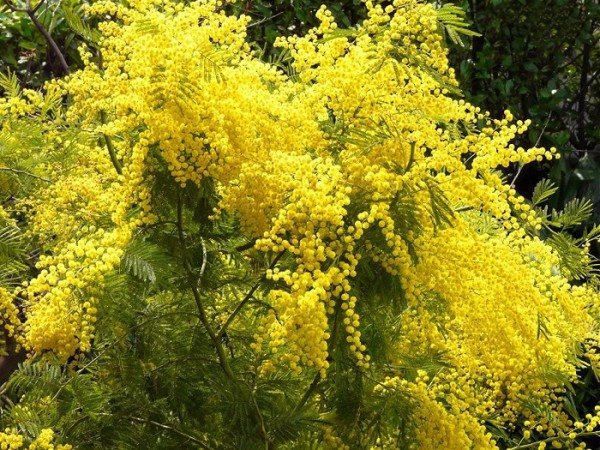

They emit a light herbaceous aroma that lasts a long time even on cut shoots. Mimosa is pollinated by both insects and wind. The flowering of the bush lasts up to 4 months, and after its completion, fruits enclosed in pods appear on the branches. Each of them contains 2-8 beans.
An interesting feature of the plant is that even with a slight touch, the mimosa leaves curl up, which makes the culture look wilted. After 30-60 minutes, she again dissolves the leaves, gaining beauty. Scientists believe that this property of a plant is associated with the climate in its natural growing environment. Collapsing leaves helps the shrub to protect itself from heavy tropical rainfall.
In addition, culture has a life rhythm, the duration of which is 22-23 hours. After this time, the bush "falls asleep", folding the leaves, and after a certain period unfolds them again. Interestingly, this happens regardless of daylight hours.
Initially, the shrub grew only on the island of Tasmania, where an ideal hot climate reigns for it. From this area, the shrub began to spread throughout the world, taking root in the warm regions of Russia. Mimosa fell in love with the Black Sea coast, so it can be found in Sochi, Abkhazia and the Caucasus.
The mimosa tree is also found in Brazil, Montenegro and France. The last two countries even have a separate day dedicated to this culture.
Features of pruning, transplanting mimosa
Buds appear only on young shoots. In order to have more new branches, it is necessary to pinch. Thanks to this, the bush will bloom longer. Also, pruning is necessary so that the stem does not stretch, the mimosa does not lose its decorative effect.
The first time it is made in early April, following after the end of flowering. In order for it to be useful, the main thing is not to overdo it, cut only very elongated shoots, otherwise the bush will die.
When mimosa is grown as an annual, no transplant is necessary. If the bush is kept after winter dormancy, it is already cramped in the old pot. The plant is moved to a new flowerpot by the transfer method, without destroying the earthen lump. The remaining voids are filled with fresh soil mixture. It is made from the same components as the substrate for the initial planting (when buying mimosa, you need to specify in what soil it is planted). After transplanting, the bush is watered.
Shy mimosa - who called you that?
In the world of plants, we meet different names, they are sometimes how unique and even funny, that immediately the question arises of who invented such a name and why. The bashful mimosa that you see in the photo is a flower that got its "nickname" for a reason. In fact, it has unique, sensitive leaves, which, by the way, are very similar to a fern. They shut themselves off from touch, hide even from the breeze on them, like a timid beauty from the eyes of others.
But the name was given not just by the people, but back in 1753 by Karl Linnaeus, when he created his work on the description of plant species. Mimosa, he gave the prefix "pudica", which means in translation - "hiding" or "shy". This flower is known in many countries around the planet, it can grow at home and on the street, where it reaches one and a half meters. Different peoples call bashful mimosa differently - shameful, modest, touchy, sleeping grass and even a mole. The latter name is typical for countries such as Spain, Portugal and Brazil.
It is interesting! In the Caribbean and the Dominican Republic, mimosa is called "morivivi". The translation sounds beautiful and life-affirming - "I died, I am alive."
Reproduction of mimosa
Mimosa is bred with seeds and cuttings. The first method is used in February:
- Spread the seed evenly over the ground.
- Sprinkle a little with sand.
- For stratification, place the container in the refrigerator for a month.
- At the beginning of spring, rearrange it to a room with a temperature of +25 ° C.
- After a few true leaves appear, transplant the shoots into separate pots.


Seed propagation
Step-by-step propagation by cuttings:
- Cut 10 cm cuttings from the tops of the branches.
- Cut off the lateral processes, place in Kornevin for 8 hours.
- Plant in soil to a depth of 2 internodes.
- Cover with glass, put in a warm, well-lit place.
- Remove the shelter daily for ventilation and watering.
- Rooting will take place in 2-3 months.
Possible troubles
If you are confused by how your mimosa looks, then the reasons may be different, but all problems can be solved.
- Dull, wrinkled leaves may indicate that there is a lot of dust, the air is gassed. It happens when a window is constantly open.
- If the air is dry and irregular watering, then the leaves can begin not only to wither, but also turn yellow and even completely fall off.
- If there is an excess of water, then the mimosa will always keep the leaves closed.
- In a cold room, the flower will not bloom for a long time.
- If there is little light, then the plant will begin to stretch, lose its decorative effect. You need to change the place or add lamps for additional lighting.
- Mimosa can be bothered by spider mites, aphids. They are taken out with insecticides or folk infusions.
You have met an interesting and unusual plant. It's easy to grow it if you know some secrets, but you already know them.
Possible troubles, pests and diseases of mimosa
In case of lack of care, the following problems may arise:
| Manifestations | The reasons | Remedies |
| Sugar sticky bloom, presence of small, green or black insects. | Aphids, due to high humidity. |
|
| Deformation and shedding of greenery. Thin cobweb on the inside of the leaves and internodes. | Spider mite, due to the large amount of moisture in the air. |
|
| Yellowing and falling foliage. Not opening them during the day. | Excess moisture. | Observe the watering regime. |
| Strong pulling of the stems. | Lack of light. | Move to a well-lit place. |
| Lack of flowering. |
| Normalize conditions of detention. |
| The appearance of dry light brown spots. Grayish fluff on the stem. | Gray rot, due to excessive soil moisture, hypothermia. |
|
A weed or a plant of marvelous beauty?
Initially, mimosa was imported to the Caucasus as a unique plant that was used to decorate parks and alleys. If today you ask local residents about where mimosa grows in the Caucasus, they will be very surprised, because there it is ubiquitous. The shrub literally occupied the territory so much that the local population already perceives it as a weed.
Today, a tree with spreading branches, strewn with bright yellow flowers, can be found at every step. Therefore, in those parts of the world, people do not ask the question of where mimosa grows. The yellow beauty is widespread in Sochi as well. Most simply do not pay attention to such a wondrous beauty, which has become a spring symbol. But the inhabitants of the northern regions cannot stop looking at the first spring flowers, which are simply strewn with the counters of flower shops during the March holidays.
Description
Shy belongs to plants of the genus Mimosa (legume family). South America is considered the homeland of the plant, although at present in nature it can be found in the tropics of Asia and Africa.People call her "sissy" or "shy mimosa."
Mimosa bashful refers to herbaceous dwarf shrubs. Under natural conditions, it grows up to one and a half meters. In an apartment, the plant height reaches 30-60 centimeters. The stem of the plant is straight, from it on long cuttings, in groups of three to five pieces, two-pinnate leaves extend from it. There are small thorns on the trunk, and the whole plant is covered with whitish hairs.
The shy mimosa blooms throughout the summer. Mauve flowers are collected in globular inflorescences and are located at the ends of young shoots. The diameter of the "heads" of flowers is about two centimeters. In nature, flowers are pollinated by wind, insects. To obtain seeds when grown indoors, artificial pollination is necessary. If everything is done correctly, then over time the flower begins to fall, the stem thickens. The pod contains two to ten seeds. Dried pods are stored until spring in the refrigerator, put in a paper bag. The best place is the shelf on the refrigerator door. In the spring, seeds are planted to produce a new plant.
Features of the
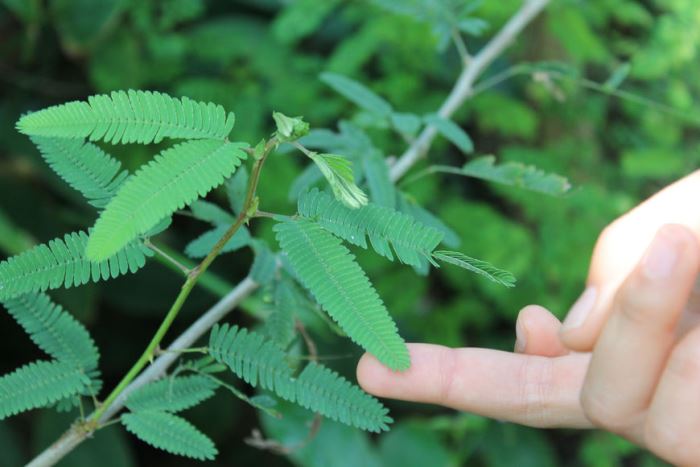

Shy mimosa is remarkable in that it reacts to touch. As soon as you touch its leaves with your hand, they roll up, press against the trunk. After twenty to thirty minutes, if the plant is not disturbed, the leaves will return to their previous shape. Hence the name - bashful mimosa.
But scientists in the eighteenth century noticed that the movement of the leaves of a plant depends on the following factors:
- from the time of day;
- from external stimuli.
At night, the leaves are folded, regardless of whether there is a light source or not. This feature of the flower was discovered by the astronomer Jean-Jacques de Meyran (Meran) from France. He placed the plant in a room without light, but the leaves fell only at nightfall. He explained this by the fact that the rhythms of leaf movement are similar to the rhythms of sleep in humans. Such rhythms are called circadian and are of endogenous origin. Also, mimosa leaves fall under the gusts of wind, when shaken. The plant can fold leaves along the central vein, and can lower the leaf to the stem.
This may be interesting: Peperomia - the secrets of growing at home
The ability of mimosa to fold leaves has the following explanation. When a leaf is touched, chemicals are released from the cells. This leads to a decrease in the amount of water in the cells and, accordingly, folding of the leaves. In the conditions of apartments, the frequent folding of leaves in response to touch leads to a large expenditure of the internal forces of the plant, exhaustion.
As a result, the mimosa begins to fade and may die. Therefore, having planted a bashful mimosa at home, you should not bother her often. In addition, the plant is very sensitive to tobacco smoke, because of which it dies.
The pollen of the plant can cause allergies, and its leaves are poisonous if ingested. Therefore, we advise you to put the bashful mimosa in a place inaccessible to small children and pets.

